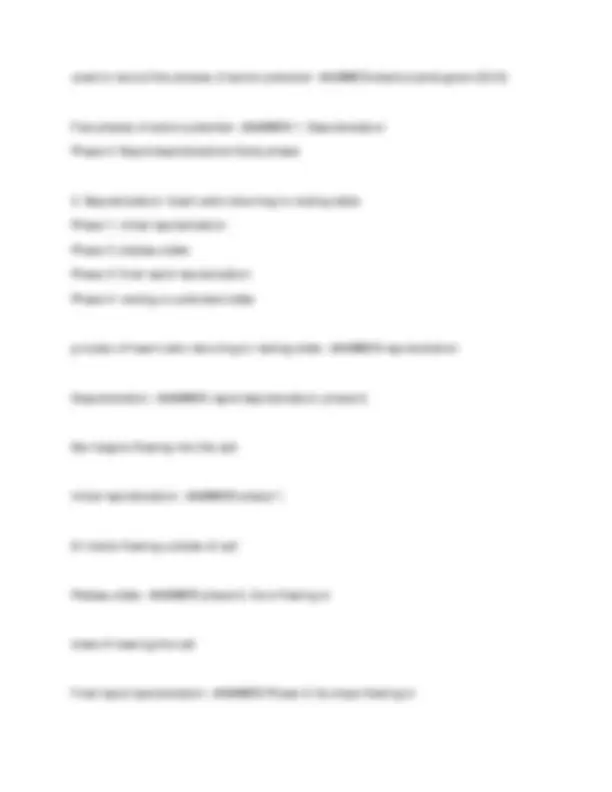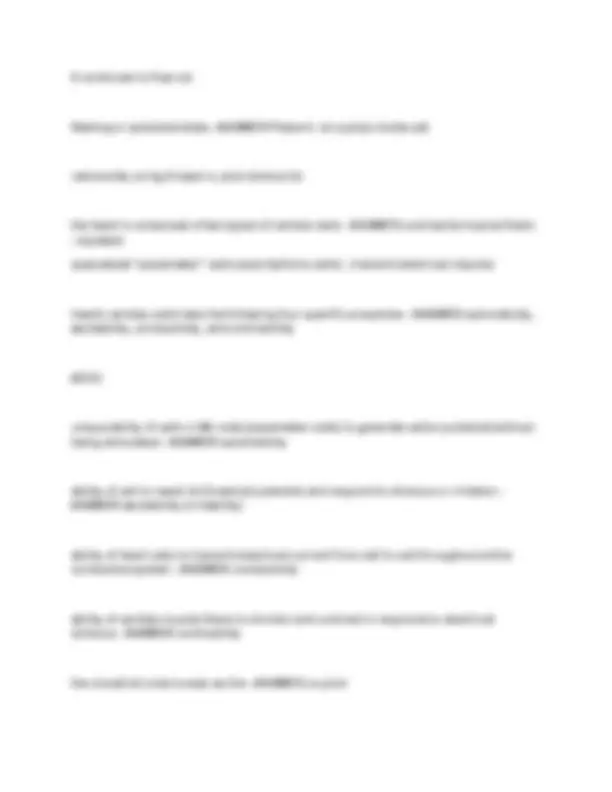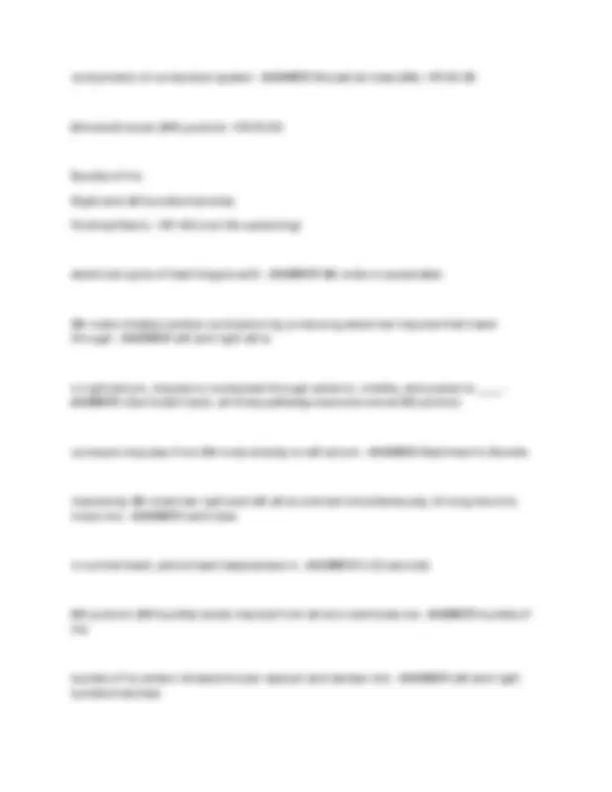





Study with the several resources on Docsity

Earn points by helping other students or get them with a premium plan


Prepare for your exams
Study with the several resources on Docsity

Earn points to download
Earn points by helping other students or get them with a premium plan
Community
Ask the community for help and clear up your study doubts
Discover the best universities in your country according to Docsity users
Free resources
Download our free guides on studying techniques, anxiety management strategies, and thesis advice from Docsity tutors
A detailed question-and-answer review of the electrophysiology of the heart, covering key concepts such as action potentials, membrane potentials, the conductive system, and heart sounds. it's an excellent resource for students studying cardiac physiology, offering a thorough examination of the subject matter through a series of insightful questions and comprehensive answers. The material is well-organized and easy to follow, making it ideal for self-study or exam preparation.
Typology: Exams
1 / 7

This page cannot be seen from the preview
Don't miss anything!




heart contracts by _____ and ____ action potentials - ANSWER generating andpropagating
electrical currents that travel across cell membranes of the heart - ANSWER actionpotentials
in neurons, a transmitted action potential is called - ANSWER nerve impulse when the heart is relaxed (not generating an action potential), cardiac muscle fibers arein a - ANSWER polarized or resting state (diastole)
filling state is taking place** filling w/blood for next contraction electrical difference between electrolytes inside cell membranes and electrolytesoutside of cell membranes - ANSWER resting membrane potential (RMP)
primary electrolytes responsible for electrical difference across RMP - ANSWERPotassium (K+) Sodium (Na+) Calcium (Ca2+) concentration is greatest inside cardiac cell (151 mEq/L) - ANSWER K+ (potassium) about 4 mEq/L outside cell
concentration is greatest outside cardiac cell - ANSWER Na+ (sodium) and Ca2+(Calcium)
concentration outside cardiac cell is about 144 mEq/L - ANSWER Na+ (sodium) about 7 mEq/L inside cell concentration outside cardiac cell is about 5 mEq/L - ANSWER Ca2+ (calcium) less than 1 mEq/L inside cell when cardiac cell is in resting/polarized state, inside of cell is _____ and outside of cell is______ - ANSWER inside: negatively charged with K+ ions outside: positively charged with Na+ ions for each Na+ ion that diffuses into the cell, about _____ K+ ions diffuse out of the cell -ANSWER 75 K+
deficiency of positive cations inside cell; cell has a negative charge difference between electrolytes inside cell and electrolytes outside cell generates an_______ - ANSWER electrical charge
potential force of resting membrane potential (RMP) is measured in - ANSWER millivolts(mV)
1 mV = 0.001 V RMP of myocardial cells is about -90 mV
K continues to flow out Resting or polarized state - ANSWER Phase 4; ion pumps inside cell remove Na, bring K back in, and remove Ca the heart is composed of two types of cardiac cells - ANSWER contractile muscle fibers- squeeze specialized "pacemaker" cells (autorhythmic cells) - transmit electrical impulse hearts cardiac cells have the following four specific properties - ANSWER automaticity,excitability, conductivity, and contractility
AECC unique ability of cells in SA node (pacemaker cells) to generate action potential withoutbeing stimulated - ANSWER automaticity
ability of cell to reach its threshold potential and respond to stimulus or irritation -ANSWER excitability (irritability)
ability of heart cells to transmit electrical current from cell to cell throughout entireconductive system - ANSWER conductivity
ability of cardiac muscle fibers to shorten and contract in response to electricalstimulus - ANSWER contractility
the sinoatrial node is seen as the - ANSWER co-pilot
components of conductive system - ANSWER Sinoatrial node (SA): HR 60- Atrioventricular (AV) junction: HR 40- Bundle of HisRight and left bundle branches Purkinje fibers - HR <40 (not life sustaining) electrical cycle of heart begins with - ANSWER SA node or pacemaker SA node initiates cardiac contraction by producing electrical impulse that travelthrough - ANSWER left and right atria
in right atrium, impulse is conducted through anterior, middle, and posterior ____ -ANSWER internodal tracts; all three pathways become one at AV junction
conducts impulses from SA node directly to left atrium - ANSWER Bachmann's Bundle impulse by SA node has right and left atria contract simultaneously, forcing blood tomove into - ANSWER ventricles
in normal heart, entire heart depolarizes in - ANSWER 0.22 seconds AV junction (AV bundle) sends impulse from atria to ventricles via - ANSWER bundle ofHis
bundle of his enters intraventricular septum and divides into - ANSWER left and rightbundle branches
soft sound- recommend echocardiogram heart murmurs - ANSWER due to turbulent blood flow/regurgitation of blood flow sounds like "whooshing" sound can be due to heart valve defects/congenital heart abnormalities